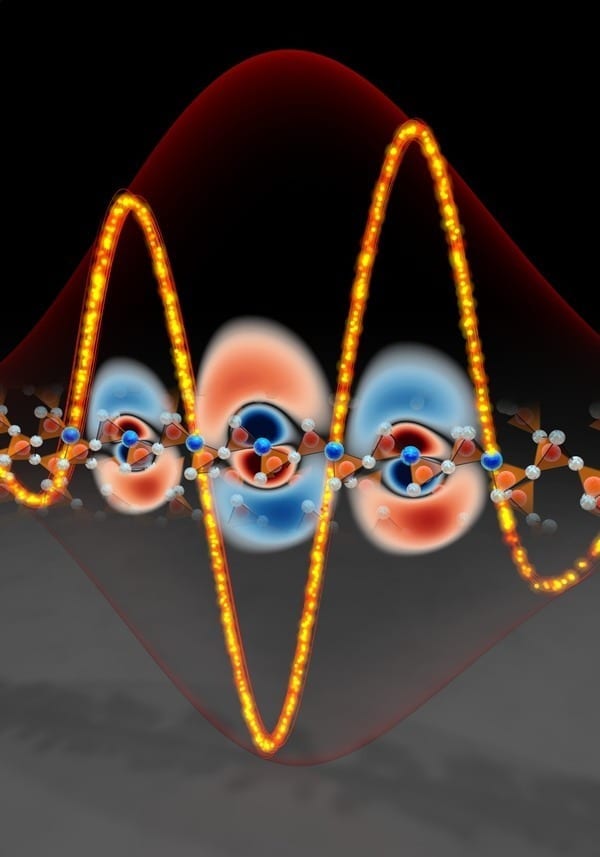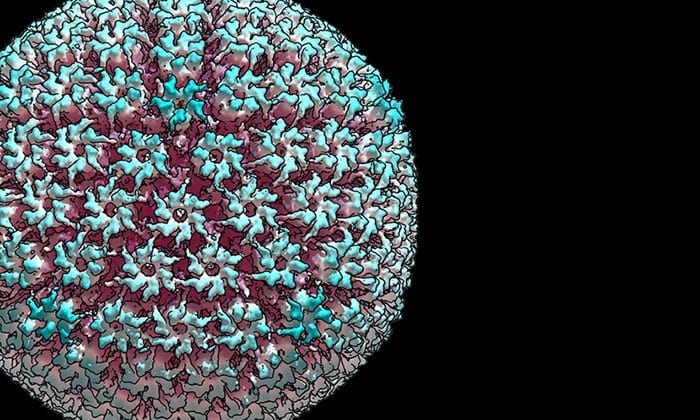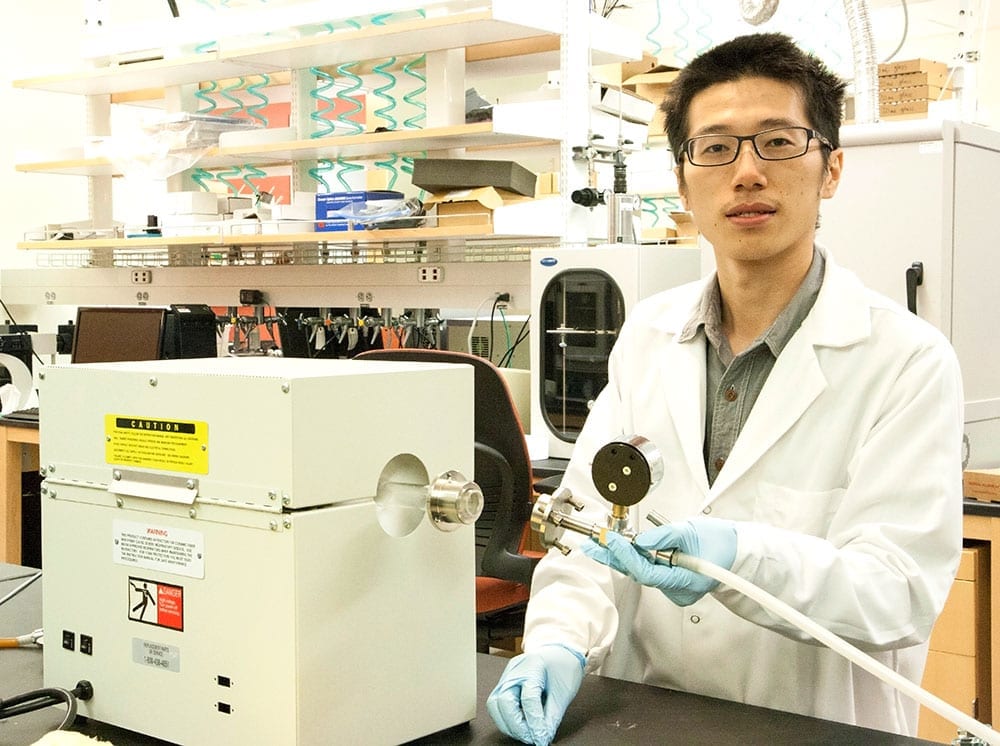
Graphic: Christian Hackenberger
A team of scientists optimized the interaction of light and glass in a way that facilitates its possible future usage for light wave driven electronics.
Light waves might be able to drive future transistors. The electromagnetic waves of light oscillate approximately one million times in a billionth of a second, hence with petahertz frequencies. In principle also future electronics could reach this speed and become 100.000 times faster than current digital electronics. This requires a better understanding of the sub-atomic electron motion induced by the ultrafast electric field of light. Now a team of the Laboratory for Attosecond Physics (LAP) at the Max-Planck Institute of Quantum Optics (MPQ) and the Ludwig-Maximilians-Universität (LMU) and theorists from the University of Tsukuba combined novel experimental and theoretical techniques which provide direct access to this motion for the first time.
Electron movements form the basis of electronics as they facilitate the storage, processing and transfer of information. State-of-the-art electronic circuits have reached their maximum clock rates at some billion switching cycles per second as they are limited by the heat accumulating in the process of switching power on and off.
The electric field of light changes its direction a trillion times per second and is able to move electrons in solids at this speed. This means that light waves can form the basis for future electronic switching if the induced electron motion and its influence on heat accumulation is precisely understood. Physicists from the Laboratory for Attosecond Physics at the MPQ and the LMU already found out that it is possible to manipulate the electronic properties of matter at optical frequencies (Nature, doi: 10.1038/nature11567, Nature, doi: 10.1038/nature11720, both published 5.Dezember 2012).
In a follow-up experiment the researchers now, in a similar way as in their previous approach, shot extremely strong, few femtosecond- laser pulses (one femtosecond is a millionth part of a second) onto glass (silicon dioxide). The light pulse only includes one single strong oscillation cycle of the field, hence the electrons are moved left and right only once. The full temporal characterization of the light field after transmission through the thin glass plate now for the first time provides direct insight into the attosecond electron dynamics, induced by the light pulse in the solid.
This measurement technique reveals that electrons react with a delay of only some ten attoseconds (one attosecond is a billionth of a billionth of a second) to the incoming light. This time-delay in the reaction determines the energy transferred between light and matter. Since it is possible to measure this energy exchange within one light cycle for the first time the parameters of the light matter interaction can be understood and optimized for ultimate fast signal processing. The more reversible the exchange is and the smaller the amount of energy which is left behind in the medium after the light pulse is gone, the better the interaction is suitable for future light field-driven electronics.
To understand the observed phenomena and identify the best set of experimental parameters to that end, the experiments were backed up by a novel simulation method based on first principles developed at the Center for Computational Sciences at University of Tsukuba. The theorists there used the K computer, currently the 4-th fastest supercomputer in the world to compute the electron movement inside solids with unprecedented accuracy.
The researchers succeeded in optimizing the energy consumption by adapting the amplitude of the light field. At certain field strengths energy is transferred from the field to the solid during the first half of the pulse cycle and is almost completely emitted back in the second half of the light. These findings verify that a potential switching medium for future light-driven electronics would not overheat. The ’cool relationship’ between glass and light might provide an opportunity to dramatically accelerate electronic signal- and data processing, up to its ultimate frontiers. Thorsten Naeser
Learn more: A switch for light wave electronics
The Latest on: Light wave electronics
[google_news title=”” keyword=”Light wave electronics” num_posts=”10″ blurb_length=”0″ show_thumb=”left”]
via Google News
The Latest on: Light wave electronics
- Physicists reach atomic-scale telegraphy with lighton May 8, 2024 at 8:00 am
"Electronics is phenomenally sensitive but too slow to directly follow the current oscillations in the lightwave-driven quantum spark, so one has to look inside the oscillations of the emitted light ...
- Atomic-scale telegraphy with lighton May 8, 2024 at 7:59 am
“Electronics is phenomenally sensitive but too slow to directly follow the current oscillations in the lightwave-driven quantum spark, so one has to look inside the oscillations of the emitted light ...
- Automotive Electronicson May 2, 2024 at 5:00 pm
HMI, the analogue and power management specialist, has launched its HL8518, a single-chip 80 mΩ high-side switch ideal for automotive applications needing power switch for low wattage lamp, high-side ...
- Lightwave Logic Inc LWLGon April 22, 2024 at 4:59 pm
We sell different types of products and services to both investment professionals and individual investors. These products and services are usually sold through license agreements or subscriptions ...
- 10 Things to Know Before You Buy Refurbished Electronicson April 21, 2024 at 5:00 pm
These tips can help you get a deal and avoid being ripped off when buying refurbished laptops, TVs, phones, and other electronics. I've been writing about computers, the internet, and technology ...
- Don't Chuck That Tech: 7 Simple Ways to Recycle Electronicson April 17, 2024 at 5:00 pm
Need to dispose of an old TV, laptop, phone, or other gadget? There are tons of easy (and often free) ways to recycle your old gear and make sure it doesn't end up in a landfill. My title is ...
- Researchers control quantum properties of 2D materials with tailored lighton April 15, 2024 at 12:35 pm
Their results, published today in Nature, pave the way for advancements in next generation quantum electronics ... The way the light wave is twisted also allows researchers to precisely control ...
- Lightwave Logic Inc.on April 14, 2024 at 5:00 pm
The Price to Earnings (P/E) ratio, a key valuation measure, is calculated by dividing the stock's most recent closing price by the sum of the diluted earnings per share from continuing operations ...
- Best Places to Sell Your Used Electronics for 2024on April 9, 2024 at 2:01 pm
Adam Oram is a Senior Editor at CNET. He studied Media at Newcastle University and has been writing about technology since 2013. He previously worked as a Senior Writer at iMore, Deals Editor at ...
via Bing News









